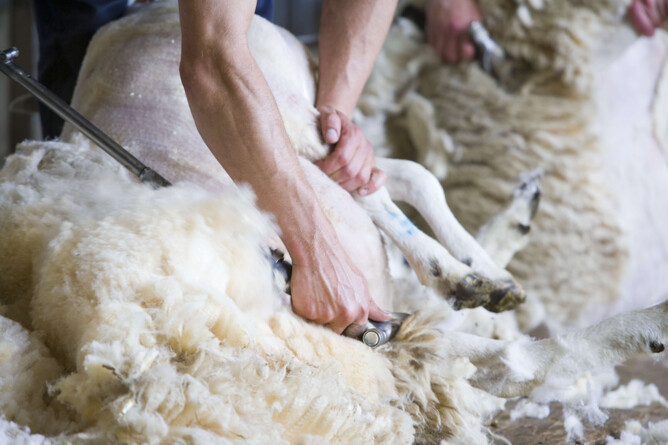Ensure any plans are well thought out to reduce the risks and boost the opportunity.
Every farmer is continually assessing risk vs opportunity and shearing decisions are no different.
We see many shearing decisions being tweaked in the current farming climate. It's all part of the reassessment process that we go through to assist with maximum production from minimal cost.
Shearing ewes during the winter must be well planned out - feed and shelter are essentials that must be available.
Feed requirements
Increasing feed allowance by 10-30% for the 2 weeks after shearing is essential. This will need to increase if the weather is nasty.
Ensure the ewes get a chance to fill their bellies with some grass/hay etc after they are empty, before feeding any grain/crops or high energy feeds. You don’t want to cause them a gut ache and acidosis!
Shelter
Shelter is easier to come by on some farms than others. It's suggested if you don’t have ‘natural shelter’ then you should shear only what you can put back under cover at a time.
A three day gap between batches will allow the freshly shorn ewes to be put back in the shed if need be.
Pregnancy management
Ewes that are shorn between 50-100 days of gestation will give birth to larger lambs. This makes a difference to lamb survival (3%), and also days to slaughter.
When we investigate lamb deaths during spring, the most common cause of death is low lamb birth weight, so shearing will help, if it is done well.
Timing is key for bearings risk
Shearing timing can have an effect on bearings. Shearing between mating and scanning has been associated with higher risk of bearings.
Shearing in the 3 months before mating OR the second half of pregnancy is thought to be protective.
Protecting lighter ewes
Be cautious of creating issues in ewes with poor Body Condition Score (BCS). Is there an option not to shear low BCS ewes? If not, could you use a cover comb or lifter?
We still want to set her up for success, but, you may need to quickly put your hand on your ewes and draft off light ewes before shearing. It will be a job that pays you back with improved production and less losses.
You may still have a couple of weeks to improve their condition before late pregnancy and being in a small mob will definitely help.
Late gestation shearing
Late gestation shearing - after 100 days - should be avoided. There is a much higher risk of pregnancy toxaemia and milk fever. Talk to us about options to support your ewes if you get caught in this scenario.
This winter is looking good for the majority of our farmers, with ewes well-conditioned, plenty of conserved feed and good crops. We feel for the many who are farming in areas affected by a dry season this year.

